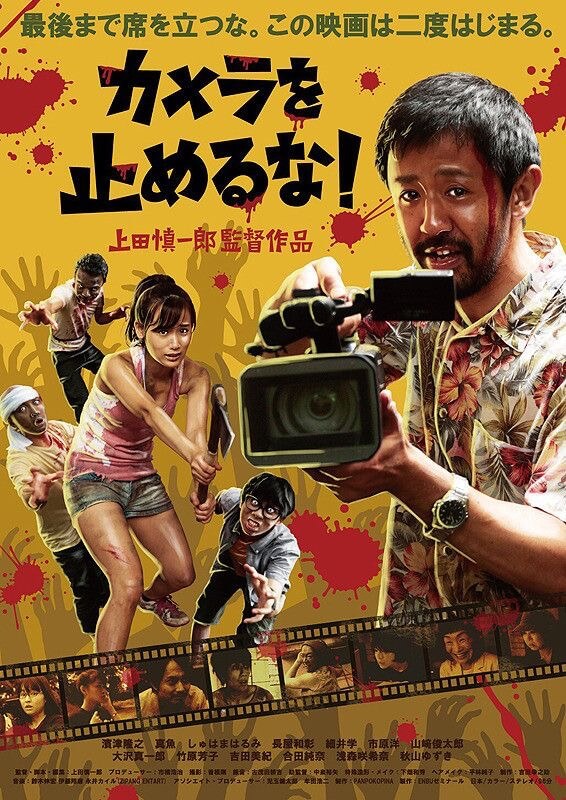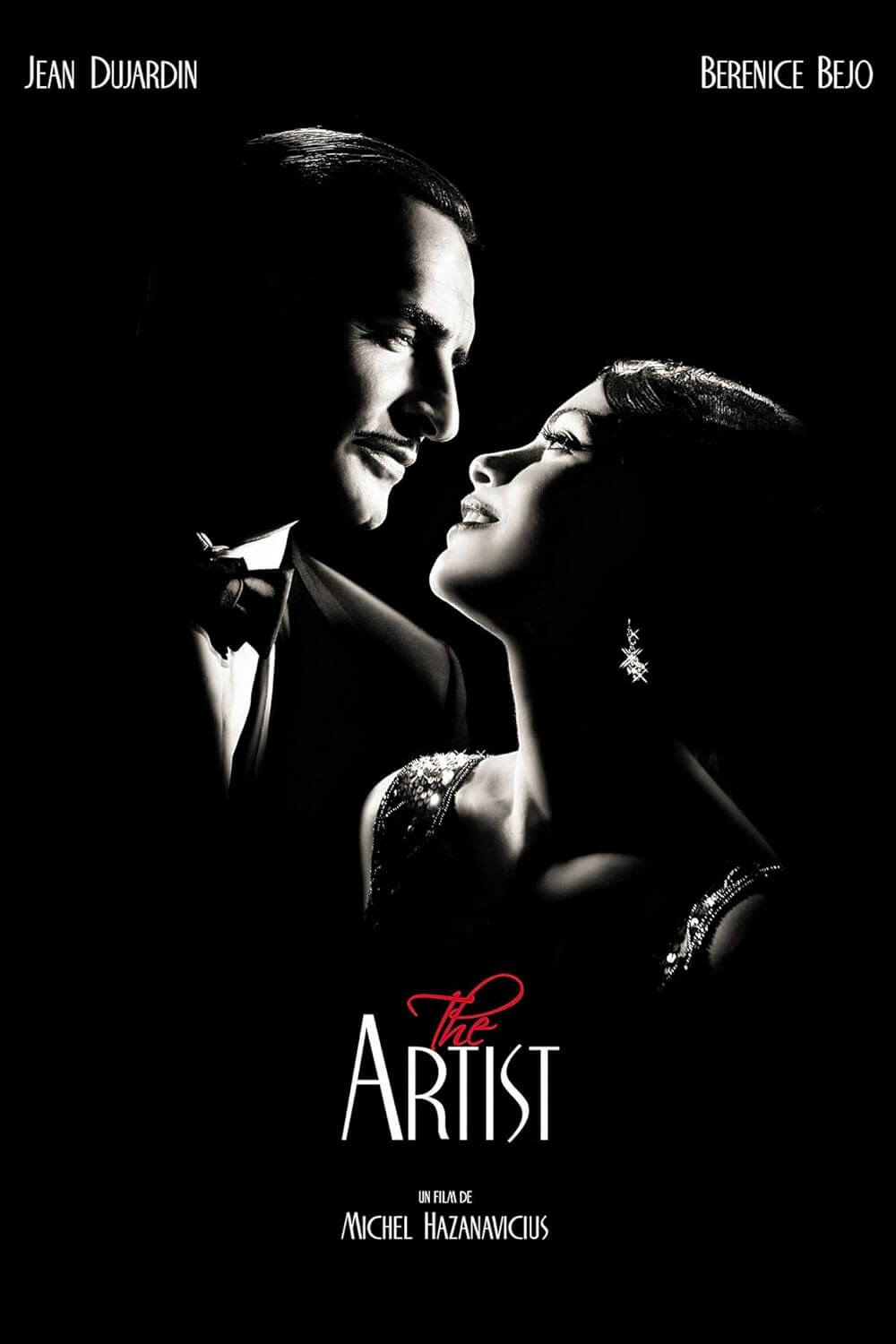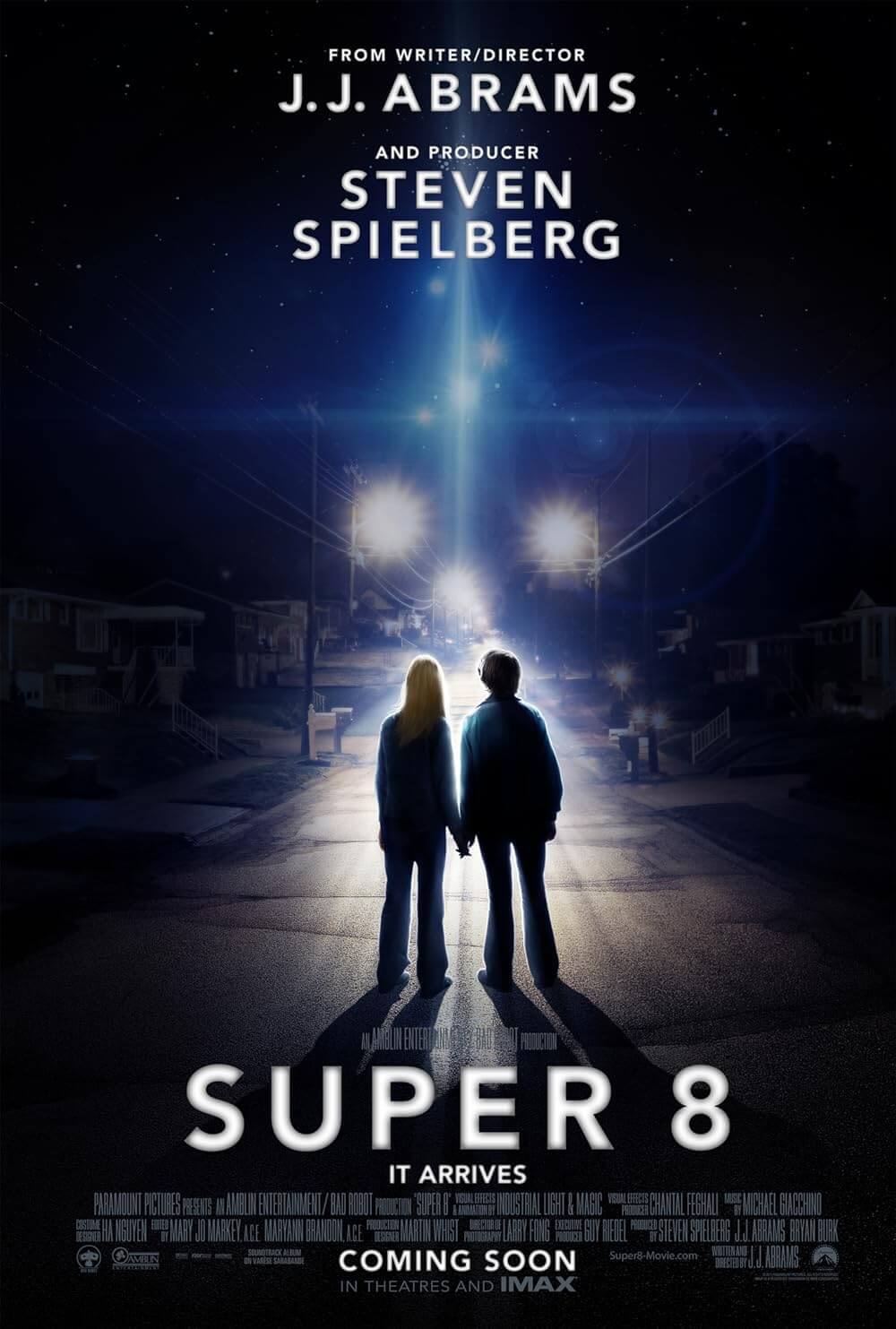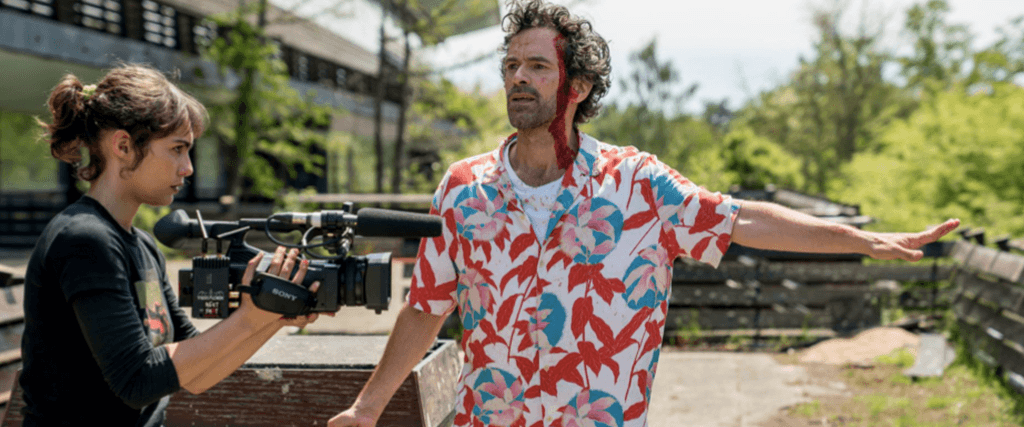
Final Cut
By Brian Eggert |
Since winning Best Director when his breakout The Artist (2011) charmed Academy Award voters, French filmmaker Michel Hazanavicius has refreshingly resisted the lure of Hollywood. Other directors would have been tempted to exploit the situation, but Hazanavicius has maintained defiantly non-Hollywood output. He contributed to a raunchy anthology (The Players, 2012), an austere drama about Chechnya (The Search, 2014), an ode to Jean-Luc Godard (Godard Mon Amour, 2017), and a CGI spectacle about an imaginary film studio (The Lost Prince, 2020)—all European productions. In The Artist and most of his other films, Hazanavicius often remarks on the medium, having an apparent love of film history and the filmmaking process; he almost exclusively operates in the theme of films about film. So it makes sense that he made Final Cut, a remake of One Cut of the Dead (2017), which, on the surface, looks like a B-grade zombie movie, though its genre disguise gives way to a discerning portrait of filmmaking at its collaborative best.
For those unfamiliar, One Cut of the Dead is a formally ambitious microbudget production that debuted in Japan, initially in just two theaters. With the help of a drama school, Shin’ichirô Ueda made the film for the yen equivalent of $25,000, and positive word-of-mouth turned the production into a $30-million earner that received global attention. It finally reached the United States in 2019, becoming a cult favorite. If you haven’t seen it, you shouldn’t see Final Cut. You also shouldn’t read further, because watching the film without any foreknowledge is essential to that experience. The original setup involves a small-time film crew making a cheap zombie movie, only to have their set invaded by real zombies, leading to an inspired commentary on the disasters and teamwork that emerge on film sets. However, Hazanavicius’ remake seems more interested in filmmaking than the horror genre, robbing his film of a vital component that made the original so memorable.
When I saw One Cut of the Dead, I knew only this basic premise and that Ueda had reportedly shot his film in a single extended take. The first half-hour looked like extreme low-budget fare, but the wild camera movements, offbeat humor, and frantic energy delivered a nonstop ride. And that’s when the film-within-the-film ended, without the audience realizing there was a film-within-the-film. It turns out the 37-minute horror film we just witnessed in a single take was, diegetically anyway, a fictional live television event, and, what’s more, just the first act of the film proper. So in the second act, we see the long process of planning that went into the film-within-the-film, sketching out the personalities involved and technical challenges. In the third act, we see the actual filming, complete with behind-the-scenes drama, mishaps during the live production, and hilarious improvisations explaining some of the awkward onscreen moments during the first 37 minutes.
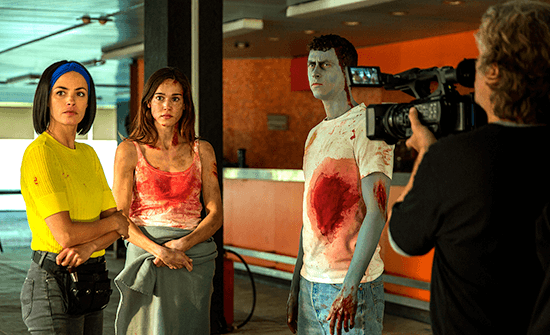 Hazanavicius takes this carefully balanced formula and destabilizes it, and not for the better. The differences between his film and the Japanese version become apparent from the first moments, when Hazanavicius fails to convince the audience that we’re watching a horror movie about a shoestring zombie movie production ironically infested with actual zombies. Hazanavicius admits in the press notes, “I can’t really say I’m a fan [of horror or zombie movies],” so he spends little time attempting to make a convincing one. Instead, the first half-hour is a clunky mess, full of intentionally bad acting and devoid of scares. It’s neither funny nor entertaining. Take Finnegan Oldfield, who plays Raphaël, a severe actor fresh off a project with “Lars” (presumably Lars von Trier). But with skin painted blue like a brain-eater from Dawn of the Dead (1978), Raphaël’s twitchy zombie performance not only fails to convince the film-within-the-film’s director, but his acting doesn’t change much from when he’s pretending to be undead to when his onscreen character turns.
Hazanavicius takes this carefully balanced formula and destabilizes it, and not for the better. The differences between his film and the Japanese version become apparent from the first moments, when Hazanavicius fails to convince the audience that we’re watching a horror movie about a shoestring zombie movie production ironically infested with actual zombies. Hazanavicius admits in the press notes, “I can’t really say I’m a fan [of horror or zombie movies],” so he spends little time attempting to make a convincing one. Instead, the first half-hour is a clunky mess, full of intentionally bad acting and devoid of scares. It’s neither funny nor entertaining. Take Finnegan Oldfield, who plays Raphaël, a severe actor fresh off a project with “Lars” (presumably Lars von Trier). But with skin painted blue like a brain-eater from Dawn of the Dead (1978), Raphaël’s twitchy zombie performance not only fails to convince the film-within-the-film’s director, but his acting doesn’t change much from when he’s pretending to be undead to when his onscreen character turns.
One Cut of the Dead was such a breakthrough because it fooled us at first, no matter how cheap it looked. It would have been a worthwhile 37-minute zombie movie even if we never saw the making-of drama afterward. Hazanavicius seems more interested in a film about filmmaking, not pulling off any elaborate trickery, which makes the first 30 minutes of Final Cut feel wasted. He identifies with Rémi (Romain Duris), the director, who, largely because he needs the work, agrees to make this ambitious production. Rémi struggles to coordinate difficult actors and a crew that can’t see how they’ll ever succeed, but at the last minute, his wife and daughter (Hazanavicius’ wife, Bérénice Bejo, and their daughter Simone), help him. The moving relationship between father and daughter remains intact, with tender bonding over their shared love of filmmaking. But Hazanavicius seems to think being self-aware and referential will absolve Rémi’s failed efforts to make a worthwhile horror movie—evidenced by the ungainly first 30 minutes of Final Cut, which make the second and third acts less engaging. Even the Japanese producer, Matsuda (Yoshiko Takehara), acknowledges that Rémi’s work is more obvious and in on the joke than the original. Yet, acknowledging how Rémi’s film, thus Hazanavicius’, is too on the nose doesn’t correct the problem but only emphasizes it.
Final Cut’s script, written by Hazanavicius, takes an already meta concept and introduces yet another layer: Rémi’s film takes place in the same world as One Cut of the Dead, and his production is a remake of the film-within-the-film from the Japanese original. Unfortunately, the remake idea doesn’t add much to the proceedings except to justify why the first third feels so lackluster. For instance, Matsuda insists that Rémi’s actors use Japanese names—just one of the many details that take us out of the first third and fails to convince us of its autonomy. Hazanavicius doesn’t have much to say about remakes, though perhaps he was inspired to comment on them after Godard Mon Amour, where he recreated scenes from Godard’s La Chinoise (1967). But his inclusion of a remake element alters nothing, except to say that filmmaking on the cheap is universally challenging, and living up to a predecessor doesn’t make it any easier.
Even so, Final Cut’s layers of meta-ness and its portrait of filmmaking clearly inspire Hazanavicius. However, he’s less committed to DIY horror than, say, he was aping silent film techniques for The Artist or 1960s aesthetics in his hilarious OSS 117 series. He’s a filmmaker interested in pastiche and satire, but he’s not a dogged traditionalist, so he takes shortcuts. Note how he creates only the illusion of an unbroken, 32-minute shot in the first third (editor Mickael Dumontier hides the single cut during the sequence). As the saying goes, necessity breeds invention, and Hazanavicius couldn’t quite pull off what Ueda did for real, so he relied on his larger €4 million budget for digital solutions. Something is deflating about that (even if two sequence shots totaling 32 minutes remain an impressive feat). Then again, Hazanavicius’ ambitions prove quite different from Ueda’s, and those unversed in One Cut of the Dead may find Final Cut more compelling for not having the association. As a document of the filmmaking process and film workers collaborating, it’s serviceable but less inspired than the original.
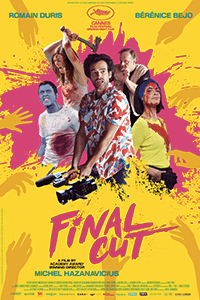
Thank You for Supporting Independent Film Criticism
Thank you for visiting Deep Focus Review. If the work on DFR has added something meaningful to your movie watching—whether it’s context, insight, or an introduction to a new movie—please consider supporting it. Your contribution helps keep this site running independently.
There are many ways to help: a one-time donation, joining DFR’s Patreon for access to exclusive writing, or showing your support in other ways. However you choose to support the site, please know that it’s appreciated.
Thank you for reading, and for making this work possible.
Brian Eggert | Critic, Founder
Deep Focus Review


